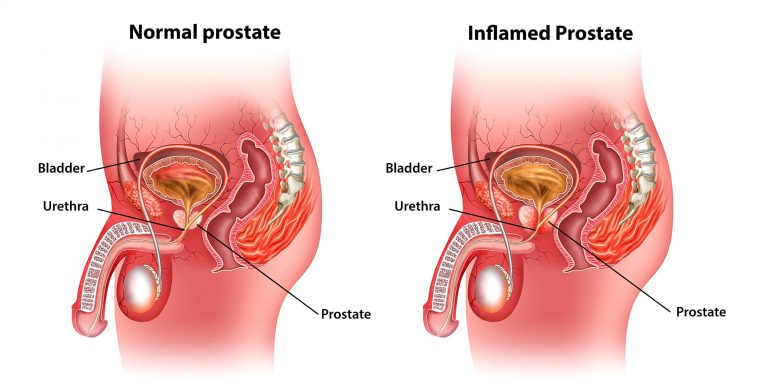Back
Prostatitis and Tight Pelvic Floor Muscles: A Comprehensive Guide
By Shannon Strauch, PTA, STMT-1 on 12/10/2024

Prostatitis and Tight Pelvic Floor Muscles: A Comprehensive Guide
Prostatitis is often thought to result from an infection or inflammation of the prostate gland. However, for many men, symptoms of prostatitis can stem from tight pelvic floor muscles rather than the prostate itself. Understanding the role of pelvic floor dysfunction in prostatitis symptoms can provide a pathway to relief that doesn't rely solely on medications.
Symptoms of Prostatitis from Tight Pelvic Floor Muscles
When the pelvic floor muscles are tight or dysfunctional, they can mimic symptoms typically associated with prostatitis, such as:
Chronic pelvic pain or discomfort in the perineum, rectum, or lower abdomen.
Pain during or after urination.
Difficulty starting urination or feeling of incomplete bladder emptying.
Painful ejaculation or erectile dysfunction.
Increased urinary urgency or frequency.
A sensation of pressure or tightness in the pelvic region.
The Pathoanatomy: Understanding the Connection
The pelvic floor muscles play a critical role in supporting the bladder, rectum, and prostate, as well as aiding in urinary and sexual function. Tight or hypertonic pelvic floor muscles can lead to:
Restricted Blood Flow
: Chronic tension in these muscles may limit blood flow to the surrounding tissues, exacerbating pain and dysfunction.
Nerve Irritation
: The pudendal nerve, which runs through the pelvic region, can become irritated by tight pelvic muscles, causing pain and altered sensation.
Prostate Misdiagnosis
: Since these muscles lie close to the prostate, tension can cause referred pain or sensations often misattributed to the prostate itself.
How Pelvic Floor Therapy Can Help
Pelvic floor physical therapy addresses the root cause of muscle dysfunction, providing significant relief for many men. Here's how:
Manual Release Techniques
: Therapists use hands-on techniques to relax and lengthen tight pelvic muscles, reduce trigger points, and improve blood flow.
Biofeedback
: This helps patients learn to relax their pelvic floor muscles and better coordinate their movement.
Posture Correction
: Poor posture can exacerbate pelvic floor tension, so therapy often includes posture-focused exercises.
Bladder and Bowel Retraining
: If urinary or bowel habits are contributing to symptoms, therapists can provide strategies to optimize these functions.
Breathing Techniques and Stretches for Symptom Relief
1. Diaphragmatic Breathing
Deep, diaphragmatic breathing can help release tension in the pelvic floor.
Lie on your back with one hand on your chest and the other on your abdomen.
Inhale deeply, allowing your abdomen to rise.
Exhale slowly, letting your abdomen fall.
Perform for 5-10 minutes daily.
2. Child’s Pose Stretch
This stretch lengthens the lower back and pelvic muscles.
Kneel on the floor and sit back on your heels.
Stretch your arms forward and rest your forehead on the ground.
Breathe deeply and hold for 30 seconds to 1 minute.
3. Happy Baby Pose
This yoga pose relaxes the pelvic floor.
Lie on your back, bringing your knees toward your chest.
Grab the soles of your feet and gently pull them downward.
Hold for 30 seconds to 1 minute.
4. Butterfly Stretch
This stretch targets the inner thighs and pelvic floor.
Sit on the floor with your knees bent and the soles of your feet together.
Gently press your knees toward the floor.
Hold for 20-30 seconds.
Lifestyle Modifications to Support Recovery
Reduce Stress
: Chronic stress can lead to pelvic floor tension. Mindfulness, yoga, and meditation can help.
Avoid Prolonged Sitting
: Sitting for long periods can increase pelvic floor tightness. Take frequent standing breaks and use ergonomic chairs.
Stay Hydrated and Eat Fiber
: Proper hydration and a fiber-rich diet can prevent constipation, which often worsens pelvic floor dysfunction.
Limit Irritants
: Reduce alcohol, caffeine, and spicy foods, which can exacerbate urinary symptoms.
Incorporate Gentle Exercise
: Activities like walking, swimming, and yoga promote circulation and reduce muscle tension.
The Holistic Path to Healing
Understanding that prostatitis symptoms may stem from tight pelvic floor muscles opens new doors to effective treatments. By addressing the underlying muscle dysfunction through pelvic floor therapy, breathing, stretching, and lifestyle changes, men can find lasting relief and reclaim their quality of life.
For personalized care, consulting with a pelvic floor physical therapist is essential. Don’t hesitate to explore this holistic and evidence-based approach to managing prostatitis symptoms. Looking to optimize your well being with pelvic floor physical therapy? Reach out to us at Pelvic Health Center in Madison, NJ to set up an evaluation and treatment! Feel free to call us at 908-443-9880 or email us at receptionmadison@pelvichealthnj.com.
Read More:
How Chronic Pelvic Congestion in Men Contributes to Prostatitis By Shannon Strauch, PTA, STMT-1 on 12/11/2024 How lymphatic issues can cause symptoms of prostatitis Prostatitis and Tight Pelvic Floor Muscles: A Comprehensive Guide By Shannon Strauch, PTA, STMT-1 on 12/10/2024 How a tight pelvic floor can be the reason for prostatitis symptoms
Are you ready to live pain free?
Request An Appointment